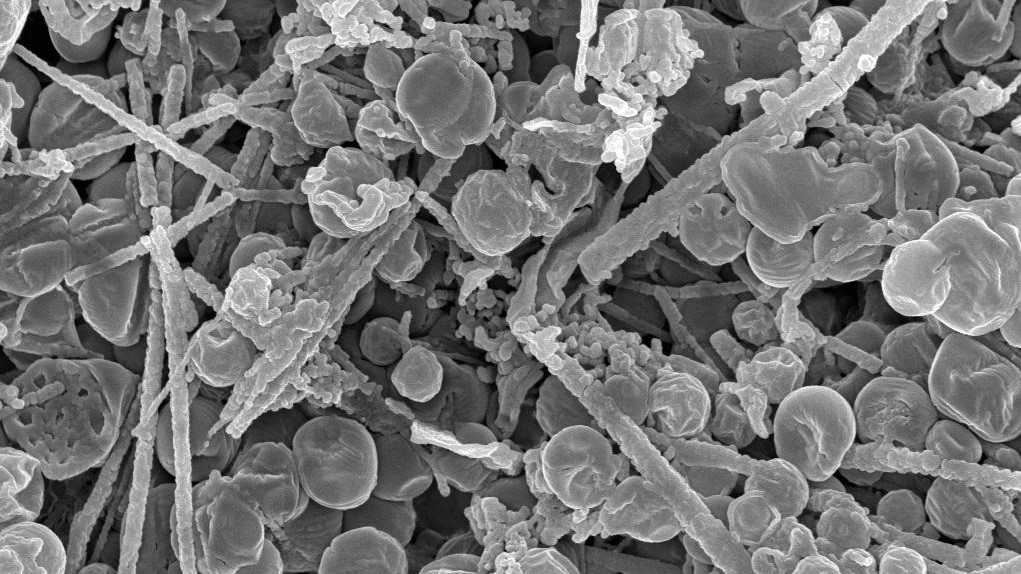'False fossils' littered across Mars may complicate the search for life on Red Planet
We have been "fooled before" by these convincing counterfeits.
Mars may be covered in dozens of different nonbiological "false fossils," which could interfere with the search for life on the Red Planet, two researchers say.
NASA's Perseverance rover touched down on Mars in February, and the European Space Agency (ESA) will launch the Rosalind Franklin rover in 2022. Both will scour the Martian surface for biosignatures — traces of past life — left behind from around 4 billion years ago, when the planet may have been habitable.
However, a new paper suggests a possible complication in that search.
Related: 6 reasons astrobiologists are holding out hope for life on Mars
"There is a real chance that one day, we will observe something on Mars that looks really biological, only to realize several years later, after further research, that this thing was actually formed by nonbiological processes," co-author Julie Cosmidis, a geobiologist at the University of Oxford in England, told Live Science.
Cosmidis teamed up with Sean McMahon, an astrobiologist at The University of Edinburgh in Scotland, to itemize these potential false biosignatures before the rovers find them.
False positives
A biosignature can be evidence of either an organism itself or any product it creates. By definition, such biosignatures can't be made by natural physical or chemical processes. For decades, astrobiologists have identified biosignatures on Earth in order to recognize potential forms of primitive life on other worlds.
Get the world’s most fascinating discoveries delivered straight to your inbox.
But this hunt for biosignatures has a major limitation. "We are so good at spotting life that we see it even when it isn't there," McMahon told Live Science.
Specifically, many things that look like biosignatures at first glance can also be created without life.
"The range of structures, materials and chemical compositions that can be produced nonbiologically overlaps quite closely with the range of things that can be produced biologically," McMahon said. "Some phenomena have been debated for decades, and we're still not sure if they're biological or not."
Paleontologists have often been confused by these fake fossils, Cosmidis said. Evidence of ancient bacteria and other single-celled organisms, like algae, can be especially tricky to identify.
In 1996, scientists claimed to have found fossils of microscopic organisms in a Martian meteorite. Their discovery was hailed as the first proof of alien life and even prompted a speech from President Bill Clinton. However, further tests revealed that these fossils were completely abiotic, meaning they were not made by life-forms.
On Mars, this confusion will be even more problematic because scientists won't be able to test samples properly until they are returned to Earth, meaning it could take years to vet the Martian samples.
"The problem is that these false biosignatures are often disproved only after further analysis by different researchers, using different techniques," Cosmidis said. "But for Mars, we won't have this option" until years after the samples get collected.
Potential biosignatures
"There is a wide diversity of potential false biosignatures on Mars," Cosmidis said.
One of the best examples is carbon-sulfur biomorphs — tiny spheres, "similar in size to bacteria," that can form spontaneously from reactions between carbon and sulfide, Cosmidis said. Both of these reactants may have been abundant on ancient Mars, and the resulting biomorphs would also "fossilize very well in rock types that are common on Mars," she added.
"If one day we find microscopic organic filaments and spheres in Martian rocks, it will be very tempting to interpret them as fossil bacteria, but they could very well just be carbon-sulfur biomorphs," Cosmidis said.
Another example are pseudo-microbialites, which mimic physical structures created by microbes, such as stromatolites — which are large structures left behind by photosynthetic algae that grow upward as cones, domes and columns. Such structures could be left behind from marine life in Mars' past oceans, but near-identical structures can also form naturally without any microbes so it will be hard to tell if they are genuine.
McMahon and Cosmidis recreated previously known false biosignatures in Martian conditions and tried to come up with new examples not yet encountered on Earth. In total, they listed more than a dozen potential fake fossils in their new paper, but many more may be out there.
The researchers hope their work will help to prevent an erroneous discovery and the resulting disappointment, which would undermine decades of work in the search for alien life.
"These errors and their corrections are a normal process in science," Cosmidis said. "But on a topic that is receiving as much attention from the public as the search for life on Mars, there is a risk that they could generate public mistrust in scientists."
However, despite their caution, the researchers say that they are fully committed to the search for life on Mars.
"We are not trying to dismiss all the efforts that NASA and ESA are currently putting into finding traces of life on Mars," Cosmidis said. "We want to support these efforts by helping the researchers involved in these missions make better and more informed interpretations of the objects they will observe."
The paper was published online Nov. 17 in the Journal of the Geological Society.
Originally published on Live Science.

Harry is a U.K.-based senior staff writer at Live Science. He studied marine biology at the University of Exeter before training to become a journalist. He covers a wide range of topics including space exploration, planetary science, space weather, climate change, animal behavior and paleontology. His recent work on the solar maximum won "best space submission" at the 2024 Aerospace Media Awards and was shortlisted in the "top scoop" category at the NCTJ Awards for Excellence in 2023. He also writes Live Science's weekly Earth from space series.
 Live Science Plus
Live Science Plus







